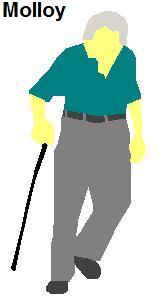|
To obliterate any misconceptions, the pile here discussed is not the book itself. The pile is the mental projection of the words themselves within the head of the reader. This is why we use the phrase 'idea pile' instead of 'pile of words.' The book itself, binding and page, is an unfortunate casualty of stack architecture. Artistic considerations: mental piles are generated by uneven information, information that is not easily categorized. Information like that contained in a brochure for Key West, Florida or assembly instructions for an IKEA bed-frame is directional. This linear information accumulates like stacks and files within the deposits of your head. The mental faculties required to read a history textbook and a Samuel Beckett novel are altogether quite different from one another. Consequently, each has a contrasting effect on our mind, our thoughts. Non-fiction, or directional writing, has the ability to change or expand what we think. Novels, however, possess the far more significant ability to alter how we think. This is why we read them. The novel Molloy has an impressive economy of paragraphs. The first section contains an 80-page paragraph. This simple abandonment of directional formatting is just the tip of the iceberg (or pile). The mind loves breaking down large deposits of information into discernible sections. This is why we have distinguishable paragraphs, this is why we put dashes in-between the digits in our phone numbers, our social security numbers. This is why capitalism has been an unparalleled success for the past two-hundred years. Capitalism pulls apart all the splendid complexity of the world and simplifies it into binary consumption. (See proceeding chapters for in-depth discussion of this process.) |

Prose without paragraphs appears to us as disorganized, a rambling of thoughts without a focal concentration. Well, that is precisely what Molloy is. The 80-page paragraph consists of the internal wonderings and external wanderings of a cripple in a superficial search for his mother's house. As Molloy slips from one thought to the next thought, each encounter he has with the outside world is treated as an equally weighted constituent of his overall experience – his life is an equally distributed pile. Molloy spends 4000 words describing the process he devices to suck stones turn and turn about in equal proportion. There is no end or beginning for the character Molloy, no direction. He has no |
| previous page | home | next page |